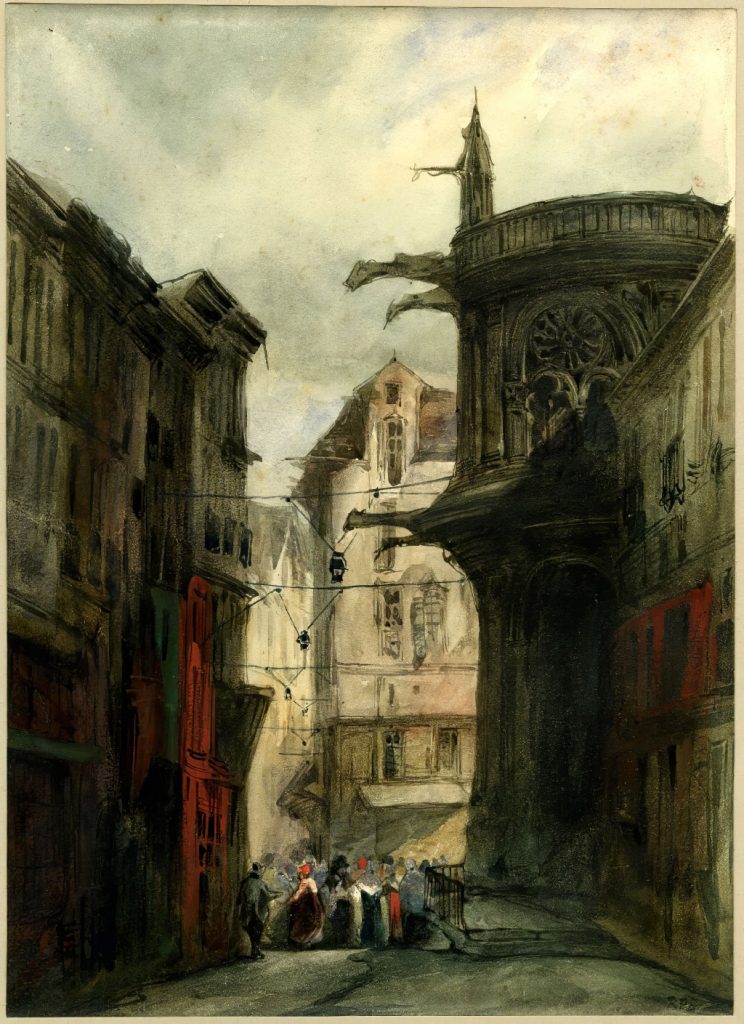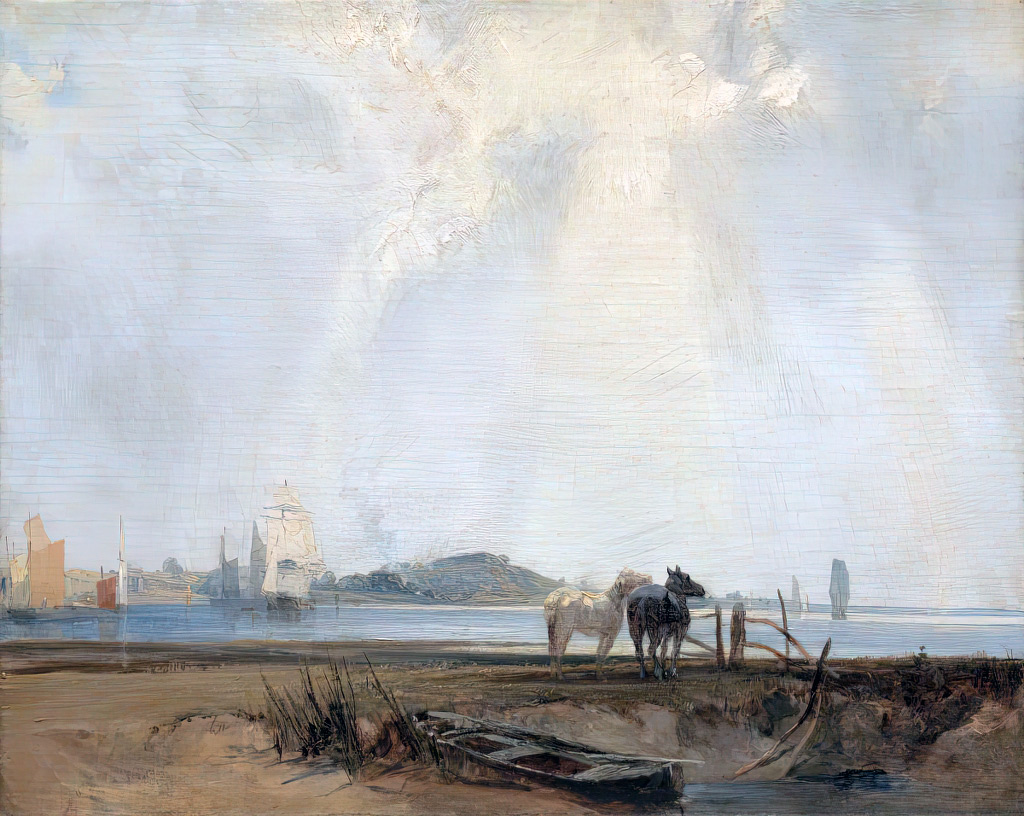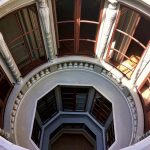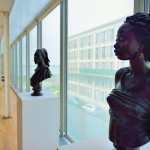This page forms part of a series of pages dedicated to the many artists who worked in Le Havre. A full list of all the artists with a link to their works can be found at the bottom of this page.
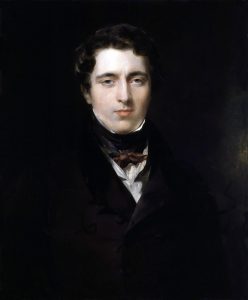
Movement(s): Romanticism
Richard Parkes Bonington (1802 – 1828) was an English Romantic landscape painter, who moved to France at the age of 14 and can also be considered as a French artist, and an intermediary bringing aspects of English style to France.
Richard Parkes Bonington was born in the town of Arnold, four miles from Nottingham. His father also known as Richard was successively a gaoler, a drawing master and lace-maker, and his mother a teacher. Bonington learned watercolour painting from his father and exhibited paintings at the Liverpool Academy at the age of eleven.
In 1817, Bonington’s family moved to Calais, France, where his father had set up a lace factory. At this time, Bonington started taking lessons from the painter François Louis Thomas Francia, who, having recently returned from England, where he had been deeply influenced by the work of Thomas Girtin, taught him the English watercolour technique.
In 1818, the Bonington family moved to Paris to open a lace shop. There he met and became friends with Eugene Delacroix. He worked for a time producing copies of Dutch and Flemish landscapes in the Louvre. In 1820, he started attending the Ecole des Beaux-Arts in Paris, where he studied under Antoine-Jean, Baron Gros.
In 1825 he met Delacroix on a visit with Alexandre-Marie Colin to London, and they sketched together there, and shared a studio for some months in Paris on their return; Delacroix influenced him in turning to historical painting.
He also developed a technique mixing watercolour with gouache and gum, achieving an effect close to oil painting. In 1826 he visited northern Italy, staying in Venice for a month, and London again in 1827–8.
In late 1828 his tuberculosis worsened and his parents sent him back to London for treatment. Bonington died of tuberculosis on 23 September 1828 at 29 Tottenham Street in London, aged 25.
He was buried in the graveyard of St James’s Chapel Pentonville and in 1837 his remains were translated to Kensal Green Cemetery to be re-interred with his parents.
Bonington had a number of close followers, such as Roqueplan and Isabey in France, and Thomas Shotter Boys, James Holland, William Callow and John Scarlett Davis in England. In addition, there were many copies and forgeries of his work made in the period immediately after his death.
Click here to read Bonington’s full bio on Wikipedia.
We found two of his paintings of Le Havre, and two others in the surroundings.
NOTE: Click on the image below for a bigger version (no new window will open).
Harfleur
The town of Harfleur lies against Le Havre on the East.
Quillebeuf-sur-Seine
Quillebeuf lies on the far outskirts of Le Havre towards the East alongside the Seine river. It is NOT in the same “departement” (i.e.= state) as is Le Havre (Seine-Maritime), but is in the Eure “departement”.
Bonington painted mostly in many cities in France (a link “⇠” to his works in those cities will appear below when published):
- Auvergne-Rhone-Alpes
- Hauts-de-France
- Boulogne
- Calais
- Dunkerque
- Normandy
- Caudebec-en-Caux (and surrounding): ⇠
- Jumieges ⇠
- Le Havre (and surroundings): ⇠
- Harfleur ⇠
- Quillebeuf ⇠
- Le Treport
- Mont St Michel
- Rouen
- Trouville-sur-Mer ⇠
- Caudebec-en-Caux (and surrounding): ⇠
Here are the painters/artists who painted in Le Havre (a “*” indicates that the artist did not worked directly in Le Havre itself, instead worked closeby, a link “⇠” to the artist’s works will appear below when published):
- 🇫🇷 Adam, Edouard Marie ⇠
- 🇷🇺 Beggrov, Alexander ⇠
- 🇫🇷 Binet, George ⇠
- 🇺🇸 Boggs, Frank Myers ⇠
- 🇷🇺 Bogoliubo, Alexei ⇠
- 🇬🇧 Bonington, Richard Parkes ⇠
- 🇫🇷 Boudin, Eugene-Louis ⇠
- 🇫🇷 Braque, Georges ⇠
- 🇫🇷 Bruelle, Gaston ⇠
- 🇬🇧 Callow, William ⇠
- 🇬🇧 Cameron, David Young ⇠
- 🇫🇷 Ciceri, Eugene * ⇠
- 🇫🇷 Coignet, Jules ⇠
- 🇫🇷 Corot, Jean-Baptiste Camille ⇠
- 🇬🇧 Cotman, John Sell ⇠
- 🇬🇧 Cooke, Edward William ⇠
- 🇫🇷 Crepin, Louis-Philippe ⇠
- 🇫🇷 Cyr, Georges Albert ⇠
- 🇫🇷 Dauzats, Adrien * ⇠
- 🇫🇷 de Saint-Delis, Henri ⇠
- 🇫🇷 de Saint-Delis, Rene ⇠
- 🇳🇱 Dommersen, William ⇠
- 🇫🇷 Dubourg, Louis-Alexandre ⇠
- 🇫🇷 Dufy, Jean ⇠
- 🇫🇷 Dufy, Raoul ⇠
- 🇫🇷 Friesz, Othon ⇠
- 🇫🇷 Garneray, Ambroise Louis ⇠
- 🇫🇷 Gernez, Paul-Elie ⇠
- 🇫🇷 Goeneutte, Norbert ⇠
- 🇷🇺 Gritsenko, Nikolai ⇠
- 🇫🇷 Gudin, Theodore ⇠
- 🇫🇷 Guerard, Henri ⇠
- 🇫🇷 Guillaumin, Armand * ⇠
- 🇫🇷 Hervier, Louis ⇠
- 🇬🇧 Holland, James ⇠
- 🇫🇷 Huet, Paul ⇠
- 🇳🇱 Jongkind, Johan Barthold ⇠
- 🇬🇧 Kay, James ⇠
- 🇳🇱 Le Gray, Gustave ⇠
- 🇳🇱 Le Sidaner, Henri * ⇠
- 🇫🇷 Lebourg, Albert ⇠
- 🇬🇧 Lee-Hankey, William ⇠
- 🇫🇷 Lepoittevin, Eugene ⇠
- 🇫🇷 Leprince, Auguste-Xavier ⇠
- 🇫🇷 Letellier, Emile-Andre ⇠
- 🇫🇷 Loir, Luigi ⇠
- 🇫🇷 Loiseau, Gustave ⇠
- 🇫🇷 Luce, Maximilien ⇠
- 🇫🇷 Madelain, Gustave ⇠
- 🇫🇷 Marquet, Albert ⇠
- 🇫🇷 Maufra, Maxime ⇠
- 🇫🇷 Maze, Paul ⇠
- 🇫🇷 Monet, Claude ⇠
- 🇨🇦 Morrice, James Wilson ⇠
- 🇫🇷 Mozin, Charles-Louis ⇠
- 🇫🇷 Noel, Alexandre Jean ⇠
- 🇫🇷 Noel, Jules Achille ⇠
- 🇸🇪 Osslund, Helmer ⇠
- 🇫🇷 Pecrus, Charles Francois ⇠
- 🇫🇷 Petitjean, Edmond Marie ⇠
- 🇩🇰 Pissarro, Camille ⇠
- 🇫🇷 Pissarro, Lucien * ⇠
- 🇬🇧 Prout, Samuel * ⇠
- 🇫🇷 Robert, Hubert ⇠
- 🇫🇷 Roullet, Gaston ⇠
- 🇫🇷 Signac, Paul ⇠
- 🇬🇧 Stanfield, Clarkson Frederick ⇠
- 🇧🇪 Stevens, Alfred Emile Leopold ⇠
- 🇳🇱 Ten Cate, Siebe Johannes ⇠
- 🇳🇴 Thaulow, Fritz ⇠
- 🇫🇷 Thornley, Georges William ⇠
- 🇬🇧 Turner, Joseph Mallord William ⇠
- 🇨🇭 Vallotton, Felix ⇠
- 🇬🇧 Wadsworth, Edward ⇠
NOTE: You can subscribe to our new articles by entering your email address in the box on the right column (or at the very bottom of this article) and clicking on the button “Subscribe”.
You will need to check your incoming emails and validate your subscription. If you can’t see an email from us, check your Spam folder. Without validating your email address, you will not get notifications from us. WE WILL NEVER GIVE YOUR EMAIL ADDRESSES TO ANYONE!
Related Posts
- 10000
- 10000
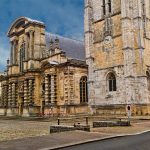 The recently (in 1974) appointed cathedral of Le Havre, the "Cathedrale Notre-Dame du Havre", is nothing to write home about. Outside it is interesting, but inside it's pretty drab. Its only saving grace is that it has an incredibly beautiful and imposing organ. It is also the oldest structure in Le Havre…
The recently (in 1974) appointed cathedral of Le Havre, the "Cathedrale Notre-Dame du Havre", is nothing to write home about. Outside it is interesting, but inside it's pretty drab. Its only saving grace is that it has an incredibly beautiful and imposing organ. It is also the oldest structure in Le Havre… - 10000
- 10000
- 10000

